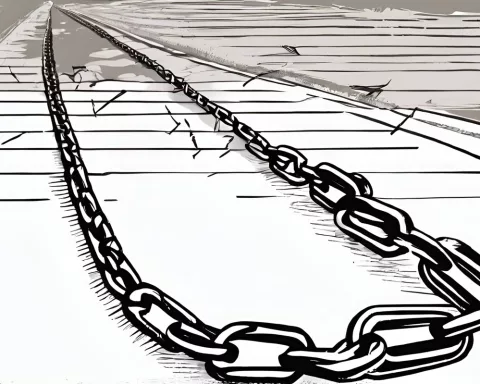The National Disaster Management Centre has officially designated the floods that hit the Western Cape and Eastern Cape provinces in September as a National Disaster. This will enable the provincial government to seek relief funds from the NDMC to aid the recovery process, including the repair of public infrastructure. Although the financial burden is significant, the collaborative approach taken by the government presents a sense of optimism for the eventual healing and reconstruction of the Western Cape and Eastern Cape provinces.
What is the National Disaster Declaration for September Floods in Western Cape?
The National Disaster Management Centre has officially designated the catastrophic floods that swept through the Western Cape and Eastern Cape provinces in September as a National Disaster. This declaration enables the provincial government to seek relief funds from the NDMC, which will be used to aid the recovery process, including the repair of public infrastructure such as buildings, roads, bridges, and water networks. The financial burden of the September floods is significant, but the joint endeavors to restore normalcy to the lives of those impacted are evidence of a united path to recovery.
The National Disaster Declaration
The catastrophic floods that swept through the Western Cape and Eastern Cape provinces in September have now been officially designated as a National Disaster by the National Disaster Management Centre (NDMC). This crucial pronouncement sets the stage for a united effort among all tiers of government to fund and repair the extensive destruction resulting from the extraordinary rainfall during the Heritage Day Long Weekend.
Anton Bredell, Western Cape Minister of Local Government, Environmental Affairs and Development Planning, expressed his approval of this decision. The National Disaster designation enables the provincial government to seek relief funds from the NDMC, which will be used to aid the recovery process and repair of public infrastructure. Affected areas include buildings, roads, bridges, and water networks.
The financial burden of the September floods is significant, with damage assessments amounting to R441 million for provincial infrastructure and an extra R154 million for municipal damages. Nevertheless, there is no certainty regarding the sum or timing of financial assistance from the national government. In the interim, the provincial government will modify existing budgets and carry on with recovery efforts to the best of their capability, as stated by Minister Bredell.
Focusing on Infrastructure and Environment
One of the most urgent matters is the restoration and reopening of roads. The latest information from the provincial Department of Infrastructure indicates that 22 roads are still closed. The renovation process prioritizes roads that connect communities and bolster economic activity. The aftermath of the floods resulted in the closure of both the N1 and N2 highways, along with over 150 other roads, for an extended duration.
An essential component of the recovery process is the fast-tracked approval of emergency repairs to rivers and streams, which usually necessitate lengthy environmental clearances. The Provincial Department of Environmental Affairs and Development Planning has thus far received 238 such requests. Utilizing Section 30A of the National Environmental Management Act, the department has already finalized 196 applications, enabling verbal permission in emergencies to avert or contain additional damage to impacted areas.
Collaboration and Resilience
With the September floods now acknowledged as a National Disaster, a coordinated effort from all branches of government is required to expedite the recovery process. From financial support to expediting environmental approvals, there is a clear sense of urgency in the joint endeavors to restore normalcy to the lives of those impacted by the calamity.
The long-term consequences of these floods for the Western Cape and Eastern Cape provinces are yet to be determined, but the National Disaster designation is undeniably a positive development. As various governmental departments work tirelessly to address the infrastructure damages and environmental concerns, the fortitude of the South African people in the face of adversity will undoubtedly be demonstrated.
While there is no guarantee of the sum or timing of monetary aid from the national government, the unwavering commitment of provincial authorities to prioritize recovery initiatives is evidence of their dedication to the people and the region. Despite the obstacles, the collaborative approach that the National Disaster designation has initiated presents a sense of optimism for the eventual healing and reconstruction of the Western Cape and Eastern Cape provinces.
1. What is the National Disaster Declaration for September Floods in Western Cape?
The National Disaster Management Centre has officially designated the catastrophic floods that swept through the Western Cape and Eastern Cape provinces in September as a National Disaster. This declaration enables the provincial government to seek relief funds from the NDMC, which will be used to aid the recovery process, including the repair of public infrastructure such as buildings, roads, bridges, and water networks.
2. What will the relief funds be used for?
The relief funds from the NDMC will be used to aid the recovery process, including the repair of public infrastructure such as buildings, roads, bridges, and water networks.
3. How significant is the financial burden of the September floods?
The financial burden of the September floods is significant, with damage assessments amounting to R441 million for provincial infrastructure and an extra R154 million for municipal damages.
4. Is there certainty about the sum or timing of financial assistance from the national government?
There is no certainty regarding the sum or timing of financial assistance from the national government.
5. Which infrastructure is being prioritized during the recovery process?
The renovation process prioritizes roads that connect communities and bolster economic activity.
6. How are emergency repairs to rivers and streams being expedited?
The Provincial Department of Environmental Affairs and Development Planning has utilized Section 30A of the National Environmental Management Act to fast-track the approval of emergency repairs to rivers and streams, allowing verbal permission in emergencies to avert or contain additional damage to impacted areas.
7. What is the joint endeavor of the government to restore normalcy?
With the September floods now acknowledged as a National Disaster, a coordinated effort from all branches of government is required to expedite the recovery process. From financial support to expediting environmental approvals, there is a clear sense of urgency in the joint endeavors to restore normalcy to the lives of those impacted by the calamity.
8. What is the long-term impact of the floods?
The long-term consequences of these floods for the Western Cape and Eastern Cape provinces are yet to be determined.








